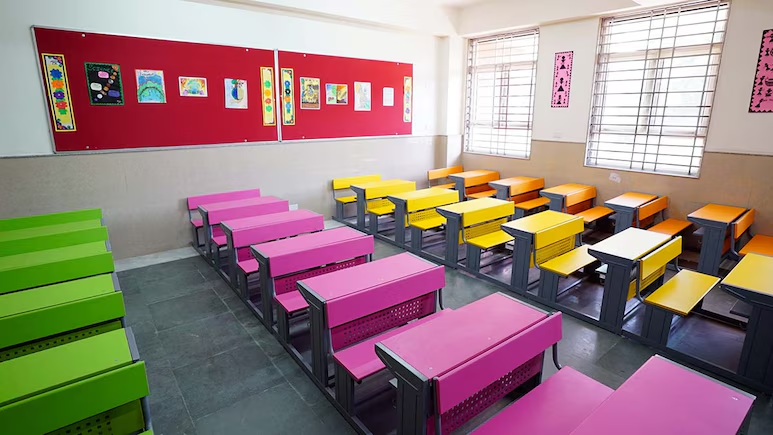
Students worrying about contracting the Coronavirus while appearing for the entrance examinations like—Joint Entrance Examination (JEE) and National Eligibility-cum-Entrance Test (NEET-UG) is a common thing now. For the last two years, as the nation battles the deadly Coronavirus crisis, the education sector amongst others has been severely hit. While some students are of the opinion that examinations should be held as ‘the show must go on', others' views differ as they say ‘can't risk life for exams.'
NEET and JEE —the most coveted of entrance examinations for engineering and medical courses—were held amid the pandemic last year. The Union government and National Testing Agency (NTA) had issued Standard Operating Procedures (SOPs) to conduct examinations amid the Covid fear.
NEET is a pen and paper-based examination conducted only once a year for students seeking admission to undergraduate medical and dental programmes. Over 15 lakh students appear for the NEET examination every year.
Due to Coronavirus, last year, NEET was deferred twice from the initial May date. The exam which was originally scheduled for May 3, was postponed to July 26, and then to September 13. NTA had also conducted a re-examination on October 14 for those medical aspirants who were unable to write the NEET exam on September 13.
COVID-19 Arrangements For NEET 2020
Last year, for ensuring social distancing outside examination halls, a staggered entry and exit of candidates was planned.
Adequate arrangements were made outside examination centres to enable candidates to stand with adequate social distancing while waiting.
Candidates were issued an advisory guiding them about the 'dos and don'ts' for proper social distancing.
State governments were asked to extend support in the local movement of the candidates so that they are able to reach their examination centres in time.
NTA had changed exam centres for a few candidates in compliance with social distancing norms and COVID restrictions. However, the city of the exam centre hasn't been changed for any candidate.
Hand sanitisers were made available at the entrance of the examination centre and inside the exam hall at all times.
The process of checking the admit cards of candidates was replaced with barcode readers,
The number of examination centres was increased. The NTA had increased the number of centres from 2,546 in 2019 to 3,862 in 2020.
The number of candidates per room was reduced from 24 to 12.
Alternate seating plan, fewer candidates per room and staggered entry and exit were among the steps the NTA had taken.
All the candidates were asked to come to the exam centres with masks and sanitisers. Once they entered the centre, they had to use the masks provided by the examination authority.
Each candidate was offered a three-ply mask at the time of entry and was expected to wear the same during the examination in order to avoid any form of unfair means at the time of examination.
Several state governments including Odisha, Madhya Pradesh and Chhattisgarh provided transportation to the NEET students.
A group of Indian Institute of Technology (IIT) alumni and students had launched a portal to provide transport facilities to exam centres for the candidates in need.
The centres which had more than 900 candidates were distributed into two centres.
NEET began at 2 pm, but entry to exam centres started at 11 am.
NEET was held in 11 languages - English, Hindi, Assamese, Bengali, Gujarati, Kannada, Marathi, Odia, Tamil, Telugu and Urdu.
